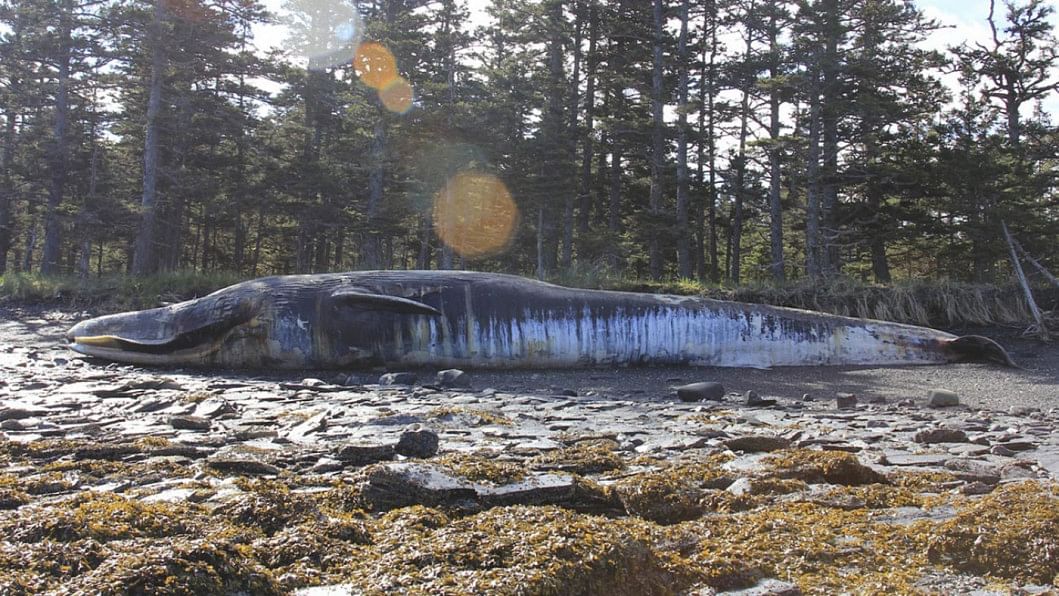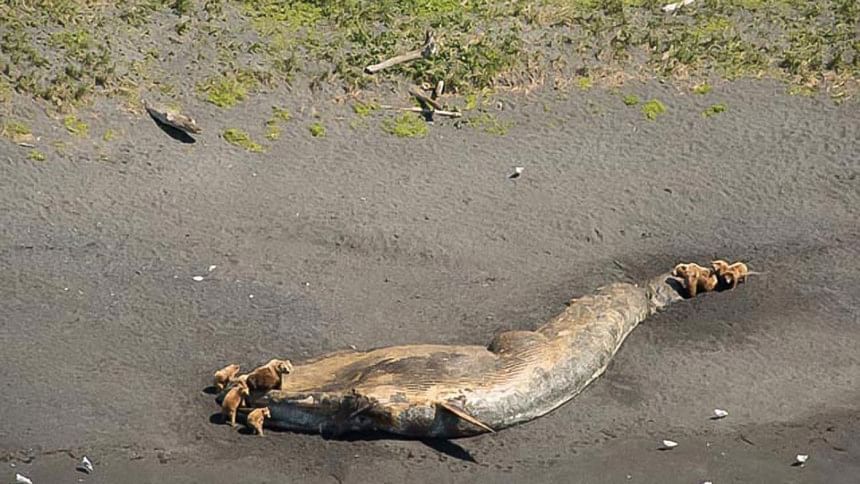30 whales mysteriously die in Alaska

Thirty large whales have died in the western Gulf of Alaska since May, an unusually high number for the region, and scientists aren't sure what's causing the die-off.
The number of large whale strandings is almost three times the historical average for the region, which is 8, according to the National Oceanic and Atmospheric Administration (NOAA).
In total, 11 fin whales, one gray whale, 14 humpback whales and four unidentified cetaceans have been found stranded on islands around the southern shore of the Alaska Peninsula and the western Gulf of Alaska, NOAA said.
Scientists are now launching an investigation into what they have declared an "unusual mortality event."
Although scientists don't know the exact cause of the die-off, they do have some ideas. The leading theory is harmful algal blooms that might be aversely affecting whale populations in the area, according to NOAA scientists. Algal blooms may be producing biotoxins in the western Gulf of Alaska and along the contiguous west coast of the United States, Teri Rowles, NOAA Fisheries' marine mammal health and stranding response coordinator, said.
"We're monitoring that and mortalities and the presence of blooms and the biotoxins in prey and in seafood and keeping track of that as we look into this investigation," Rowles added during a teleconference call on Thursday.
But NOAA investigators aren't ruling anything out — yet. It's possible that the high rate of mortality might be spurred on by disease or other problems harming whales off the coast.
About 1,200 fin whales, 5,000 humpback and 18,000 grey whales are in the northern Pacific Ocean, according to a 2013 NOAA survey.

The problem might not be relegated to the coast of Alaska, either. Scientists in British Columbia have discovered six total large whales in what might be a related die-off.
This also isn't the first time NOAA has declared a large-scale whale mortality event.
"The largest large whale event we've had was the 1999 to 2001 unusual mortality event of Pacific grey whales, and that event followed the '97 to '98 EL Nino event, and it spanned from Mexico to Russia," Rowles said.
Researchers still aren't sure what caused the 1999 to 2001 event, when more than 700 whales died, but they do believe it was environmentally driven. Officials were only able to do full necropsies on two of those animals.
These kinds of major die-offs are particularly difficult to investigate, according to NOAA.
Many of the carcasses discovered during this unusual mortality event have been too decomposed or located in inaccessible areas too dangerous for human investigators to traverse.
A number of the stranded whales are floating out to sea and not beached, making it more difficult to take proper samples.
Whale carcasses washed up on shores also have their own dangers. Predators like bears can and feed on those dead whales, making it too dangerous for people to take samples of the large marine mammal.
NOAA is now asking members of the public to aid in the investigation by contacting the Alaska Marine Mammal Stranding Network hotline if they come across a stranded or dead marine mammal.
"Only specially trained marine mammal experts are authorized to respond to marine mammals in distress," NOAA said in the statement.
"The public should not touch stranded or floating whales."

 For all latest news, follow The Daily Star's Google News channel.
For all latest news, follow The Daily Star's Google News channel. 



Comments